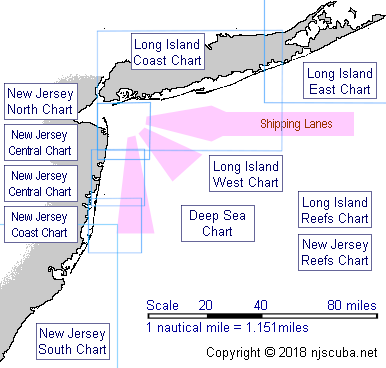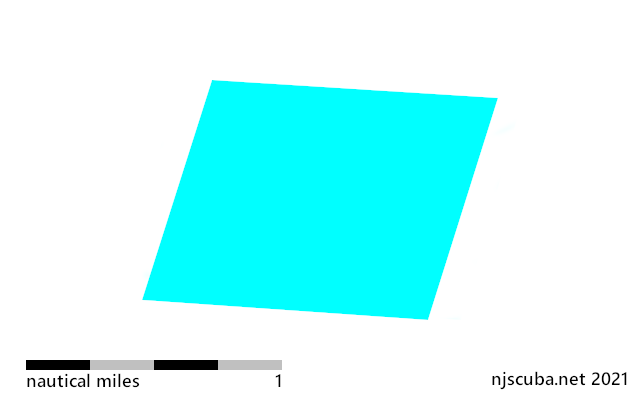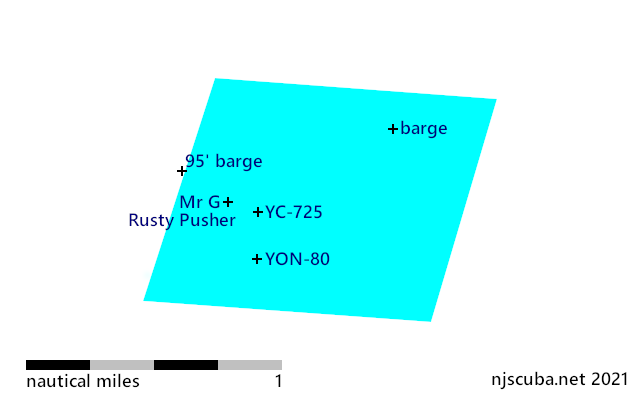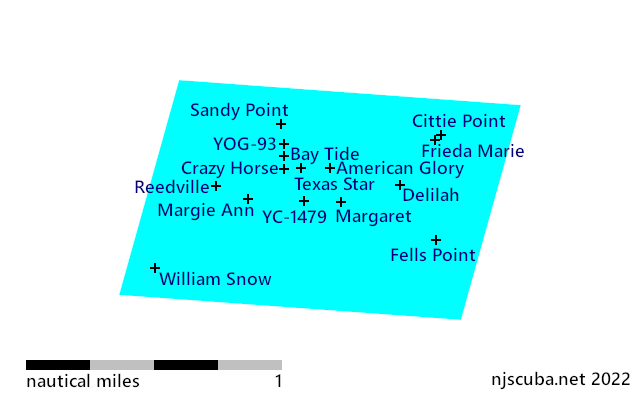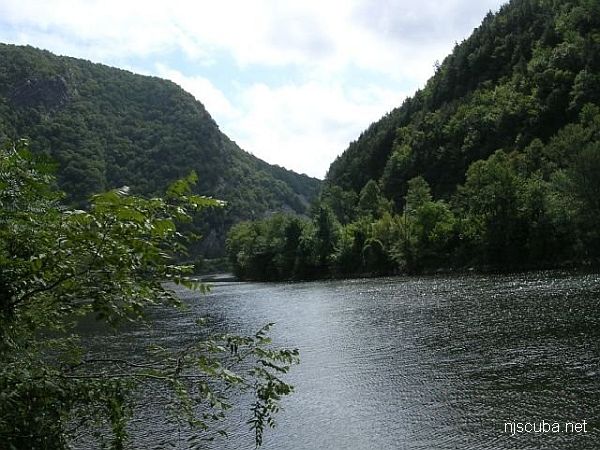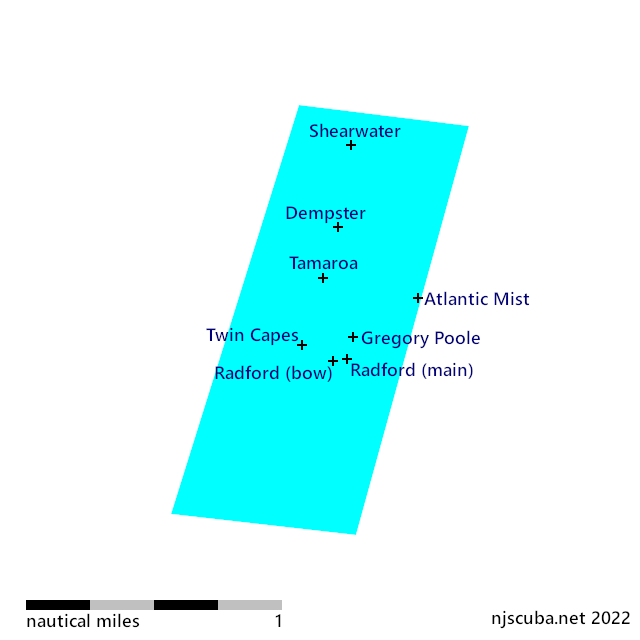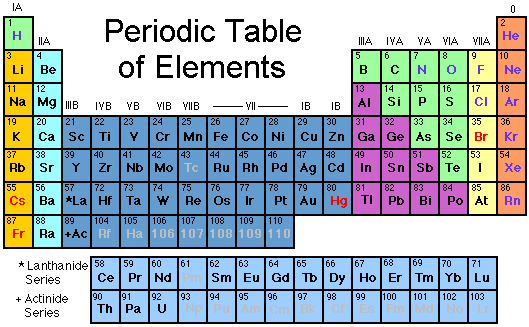New Jersey Dive Sites (9/30)
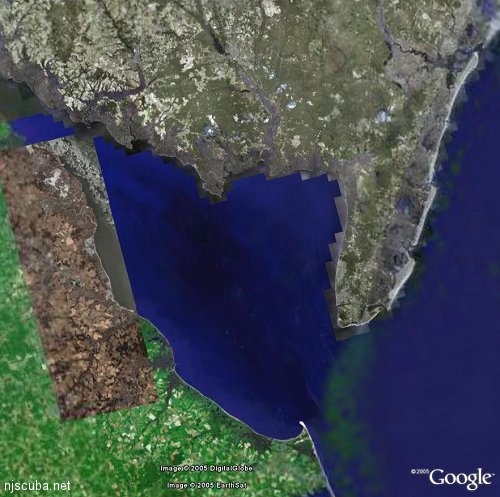
I doubt this is a good place to dive. Even without the river pollution, the bottom is muddy and the water is full of silt. If anyone knows anything different, let me know.
More: Delaware Bay ...
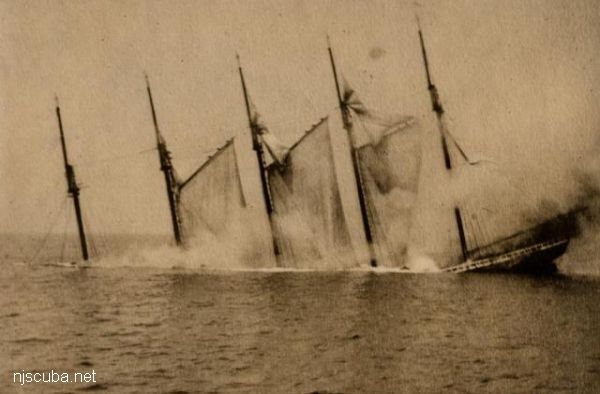
- Type:
- shipwreck, schooner, USA
- Built:
- 1904, Bath ME USA
- Specs:
- ( 259 x 45 ft ) 2088 gross tons, 10 crew
- Sunk:
- Wednesday August 14, 1918
shelled by U-117 - no casualties - Depth:
- 60 ft
low debris field mostly buried in the sand
More: Dorothy B Barrett ...
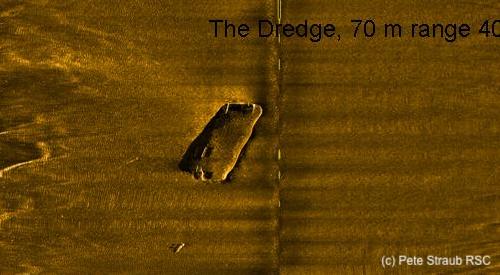
- Type:
- shipwreck, dredge barge, USA
- Sunk:
- unknown
- Depth:
- 40 ft
More: dredge ...
- Type:
- shipwreck, dry-dock barge
- Depth:
- 110 ft
This anonymous big rectangular wooden dry-dock barge lies off Asbury Park, out near the edge of the Mud Hole. It is similar to the better-known Immaculata. The hulk of the wreck rises up as much as 10 feet, partially intact, while the upper sides have collapsed into the silty sand. Holes in the main wreckage allow penetration into the dark interior, which is surprisingly barren. A debris field of large rectangular ballast stones, wooden ribs, and rusted machinery extend from the western edge of the wreck, and to a lesser extent all around it. In exceptional late October fifty-foot visibility the view of this wreck from above was impressive, but overall this is not a very pretty site, and it is seldom dived. Good for lobsters, Sea Bass, scallops, and decompression.
More: drydock barge ...

